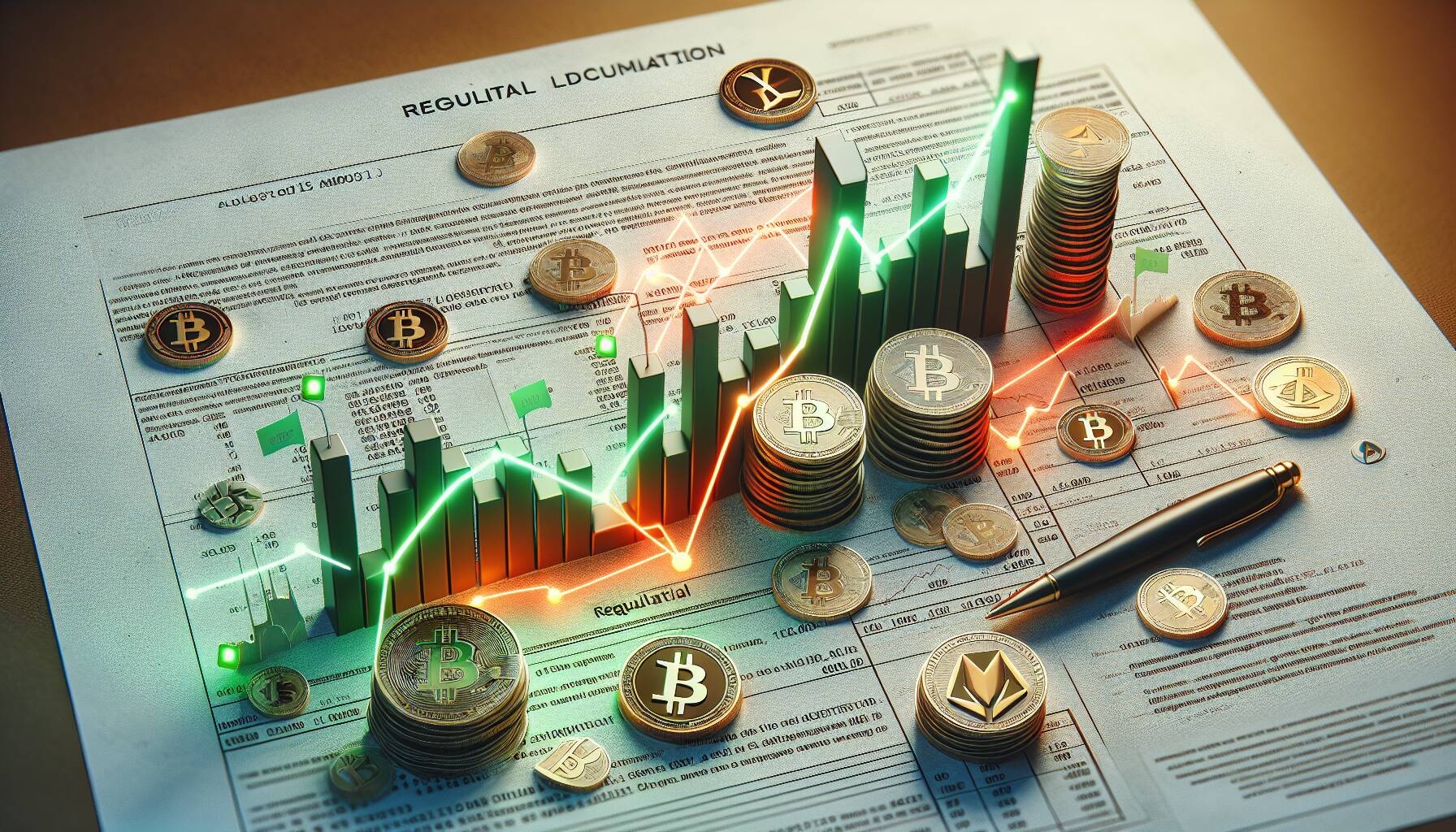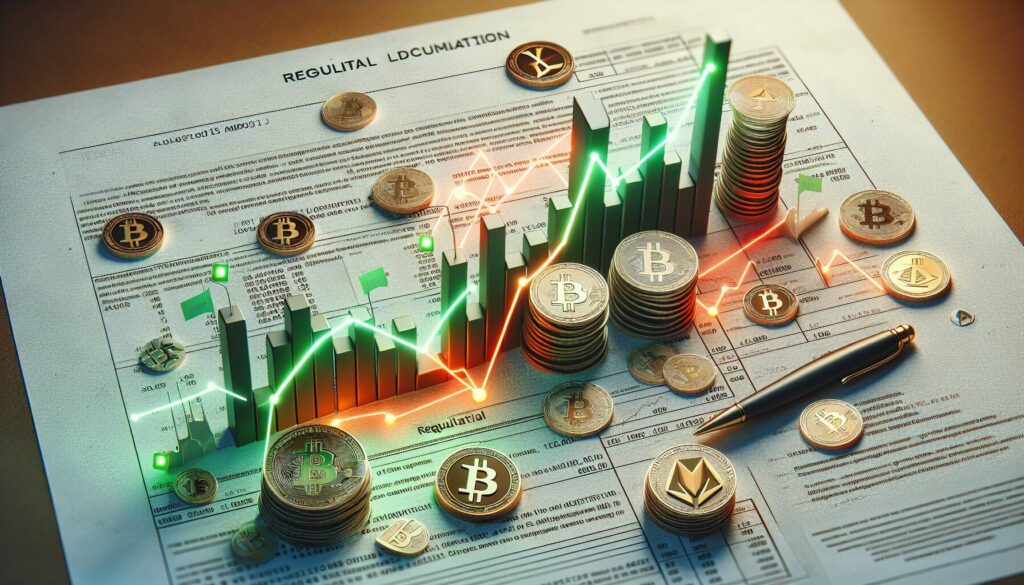The cryptocurrency landscape is currently facing a mix of caution and opportunity as key developments unfold. With all eyes on the Federal Reserve’s impending rate decision, a cloud of uncertainty looms over the market, particularly regarding U.S. cryptocurrency regulation. Recent reports have revealed hesitance among Senate Democrats to advance crucial stablecoin legislation, stemming from concerns linked to the financial interests of former President Donald Trump in digital assets. This skepticism has some investors revisiting their strategies as the regulatory environment remains murky.
Adding to this backdrop, a dip in bitcoin demand from U.S. investors has been noted, raising alarms about potential pullbacks for leading cryptocurrencies like Bitcoin (BTC) and XRP. However, there is a silver lining; U.S.-listed spot bitcoin exchange-traded funds (ETFs) have been experiencing positive inflows, illustrating sustained investor interest. Meanwhile, insights from cryptocurrency watchdogs indicate that volatility in traditional markets, particularly in the U.S. dollar, might create a conducive environment for cryptocurrencies as some view them as alternative investments in turbulent times.
The acting CFTC chairman has also hinted at a proactive approach by the agency to observe tokenization pilot programs, reflecting an ongoing interest in the practical applications of blockchain technology.
On the horizon, significant events are lined up, including the launch of major network upgrades and regulatory hearings that could shape the future of digital assets. As the market gears up for these foundational changes, traders and investors alike are keeping a close watch on both the developments within the crypto space and the broader economic indicators that bear on their decisions.

Key Points on Current Bitcoin and Crypto Market Developments
The following key points summarize the current state of the Bitcoin and crypto market, highlighting potential impacts on investors and the economy:
- Fed’s Upcoming Decision:
The cryptocurrency market is awaiting the Federal Reserve’s interest rate decision on May 7, which could influence market sentiment and investment decisions.
- Concerns Over Crypto Regulation:
Senate Democrats are hesitant to advance stablecoin legislation due to concerns about President Trump’s financial interests in crypto, potentially delaying regulatory clarity that investors seek.
- Weakening Demand for Bitcoin:
Data from CryptoQuant suggests renewed weakness in Bitcoin demand among U.S. investors, with price corrections aligning with dropping premiums.
- Spot Bitcoin ETFs Show Net Inflows:
Despite regulatory uncertainty, U.S.-listed spot Bitcoin ETFs have seen three consecutive days of net inflows, indicating ongoing investor interest.
- Global Currency Pressures:
Pressure on the U.S. dollar may lead investors to diversify into cryptocurrencies as an alternative asset, particularly if the FX market continues to experience volatility.
- Comments from U.S. Treasury Secretary:
Scott Bessent highlighted that U.S. rates are now viewed as carrying sovereign credit risk, potentially prompting a shift in capital away from U.S. assets and into alternatives like cryptocurrencies.
- Upcoming Major Events:
- May 6: Launch of Casper Network 2.0 mainnet upgrade.
- May 7: Activation of the Pectra hard fork upgrade on Ethereum.
- May 8: Sentencing of Celsius Network’s founder in a U.S. court.
- Market Movements:
Recent data indicates Bitcoin and Ethereum are experiencing slight declines, suggesting cautious investor sentiment amidst overarching market trends.
- Developments in Crypto Projects:
Tokens with stronger fundamentals are attracting trader interest, contrasting with the recent demise of meme-based tokens, indicating a potential shift in market focus towards value-driven investments.
Investors should remain vigilant as ongoing developments could significantly impact market dynamics, regulatory landscapes, and the overall perception of cryptocurrencies as viable investment options.
Current Crypto Market Dynamics Amid Regulatory Uncertainty
The unfolding narrative around cryptocurrency regulation in the U.S. reveals a complex intersection of political dynamics and market sentiment. As Bitcoin (BTC) and the broader crypto ecosystem observe the impending decisions from the Federal Reserve, the hesitation among Senate Democrats to advance crucial stablecoin legislation casts a shadow on investor confidence. This caution stems from concerns over potential conflicts of interest involving President Donald Trump and his personal crypto ventures, which could significantly complicate the political landscape for any legislation aimed at governing this space.
Advantages: On a brighter note, despite the prevailing uncertainty, the crypto market has recently witnessed an uptick in net inflows into U.S.-listed Bitcoin exchange-traded funds (ETFs), indicating a persistent interest among institutional investors. Furthermore, developments like the acting CFTC Chairman’s plans to observe tokenization pilot programs demonstrate regulatory agencies’ willingness to better understand cryptocurrency applications in real-world scenarios. This appetite for insights could eventually facilitate smoother regulatory pathways as stakeholders gain more clarity on operational frameworks.
Conversely, disadvantages are also surfacing. The potential for stifled regulatory momentum due to political entanglements significantly weighs on market sentiment. Should Senate Democrats decide to withdraw further from advancing legislation, it may lead to increased agitation among investors, creating a market characterized by volatility and speculative trading. The fading demand signals from U.S.-based investors could further exacerbate these fluctuations, causing investors to reassess their strategies amid possible pullbacks in cryptocurrency values like BTC and XRP.
This regulatory limbo creates a dual-edged sword for different market participants. On one hand, investors who favor a stable and regulated environment might benefit from clear guidelines emerging over time, potentially encouraging long-term investment and fostering trust in the crypto markets. On the other hand, for those who thrive in a more volatile trading environment, the current mixed signals could create hurdles as they navigate through uncertain conditions, limiting their trading prowess amid fluctuating prices and sentiment.
Moreover, macroeconomic factors such as U.S. dollar weakness and fluctuating interest rates present both opportunities and risks for crypto investors. As traditional markets face pressures, there’s potential for a shift toward alternative assets, including both gold and Bitcoin. However, if this trend evolves into a broader risk-averse sentiment, BTC may face headwinds as investors withdraw from higher-risk assets, thus complicating market recovery efforts.
In summary, while the potential for positive developments exists within the crypto sphere, the overarching regulatory challenges introduce significant complications. Attentive investors and market participants must continue monitoring these legislative dynamics closely, as they could dictate not only the trajectory of crypto values but also broader investment strategies in this turbulent financial landscape.

















